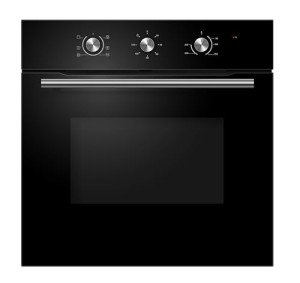The Comprehensive Guide to Built-In Ovens
Intro
Built-in ovens are a staple in modern-day kitchen areas, combining beauty with performance. They use a smooth visual and efficient cooking capabilities, making them a preferred choice for property owners and culinary lovers alike. This post explores the advantages of built-in ovens, their various types, crucial features to think about, installation ideas, and maintenance guidance, along with often asked questions.
Benefits of Built-In Ovens
Built-in ovens featured an array of benefits that contribute to their appeal. Here are some key advantages:
- Space-Saving Design: Built-in ovens are designed to fit seamlessly into cabinetry, permitting a more organized and space-efficient kitchen design.
- Aesthetic Appeal: They supply a smooth and contemporary look that can boost the general design of the kitchen.
- Improved Functionality: Built-in ovens often feature sophisticated features and technologies that support numerous cooking approaches.
- Enhanced Cooking Experience: Many built-in designs include self-cleaning functions, temperature level probes, and programmable settings, enhancing the cooking experience.
- Increased Property Value: A properly designed kitchen with built-in appliances can improve the value of a home.
Kinds Of Built-In Ovens
Built-in ovens come in a number of types, each developed to meet various cooking preferences and requirements. Here are the main types:
| Type of Built-In Oven | Description |
|---|---|
| Single Oven | A single, standalone oven for conventional baking and roasting. |
| Double Oven | Integrates 2 ovens in one system, enabling multiple dishes to prepare at different temperatures. |
| Wall Oven | Installed in the wall, releasing up counter space, suitable for little kitchens. |
| Convection Oven | Uses fans to flow hot air for even cooking, enhancing the outcomes of baked items. |
| Steam Oven | Makes use of steam for healthier cooking alternatives, protecting nutrients in food. |
Key Features to Consider
When choosing a built-in oven, numerous features can affect performance and functionality. Here are some important functions to keep in mind:
Cooking Modes
- Bake: Traditional baking with bottom heat.
- Broil: Top heat cooking suitable for browning and crisping.
- Convection: Circulates hot air for even cooking.
- Steam: Uses steam for much healthier cooking options.
Size and Capacity
- Standard sizes generally range from 24 to 30 inches wide.
- Think about the internal capability-- it can range from 3 to 6 cubic feet, permitting different meal sizes.
Controls and Smart Features
- Touchscreen Controls: Easy shows and modifications.
- Smart Technology: Connectivity functions permit for remote tracking and control via smartphone applications.
Energy Efficiency
- Search for designs with ENERGY STAR scores, indicating lower energy consumption.
Security Features
- Functions like automobile shut-off and child locks enhance safety during operation.
Installation Tips
Setting up a built-in oven might need professional assistance, but here are some general tips to keep in mind:
- Choose the Right Location: Ensure there's enough space in your cabinets for setup, bearing in mind ventilation requirements.
- Electrical Requirements: Check that your kitchen's electrical wiring satisfies the oven's power requirements, specifically for electric designs.
- Level the Oven: Ensure the oven is level to promote even cooking.
- Protect the Oven: Attach it strongly to the cabinets to prevent motion throughout usage.
Upkeep Advice
Regular maintenance is vital for the durability and effectiveness of a built-in oven. Here's how to keep it in top shape:
- Regular Cleaning: Wipe down surface areas after each usage and perform deep cleaning regularly.
- Examine Seals: Inspect door seals for wear and ensure they maintain an airtight fit to improve energy performance.
- Calibrate Temperature: If food regularly comes out overcooked or undercooked, think about recalibrating the oven's temperature settings.
- Professional Servicing: Schedule annual check-ups with a qualified technician to preserve optimum performance.
FAQs
What is the difference between a built-in oven and a freestanding oven?
Built-in ovens are designed to be set up within kitchen cabinetry, offering a seamless appearance. On the other hand, freestanding ovens are standalone units that generally feature their own cooktop.
Are built-in ovens more expensive than freestanding designs?
Typically, built-in ovens can be more expensive due to the added setup costs and advanced functions. Nevertheless, prices vary widely based upon brand name, size, and performances.
Can I set up a built-in oven myself?
While it is possible to set up a built-in oven yourself, it is recommended to employ a professional to ensure proper installation, specifically if modifications to kitchen cabinetry or electrical work are needed.
How frequently should I clean my built-in oven?
It is advisable to clean your built-in oven routinely after heavy use. For deeper cleansings, utilize the self-cleaning function if available or regularly carry out manual cleansing to prevent accumulation.
Built-in ovens are a valuable addition to any kitchen, providing both visual appeal and advanced cooking capabilities. By understanding helpful resources , features, installation, and maintenance requirements, property owners can make informed choices that boost their cooking experience and enhance the overall worth of their homes. As kitchen designs continue to progress, built-in ovens will likely stay a prominent option for modern-day homes.

